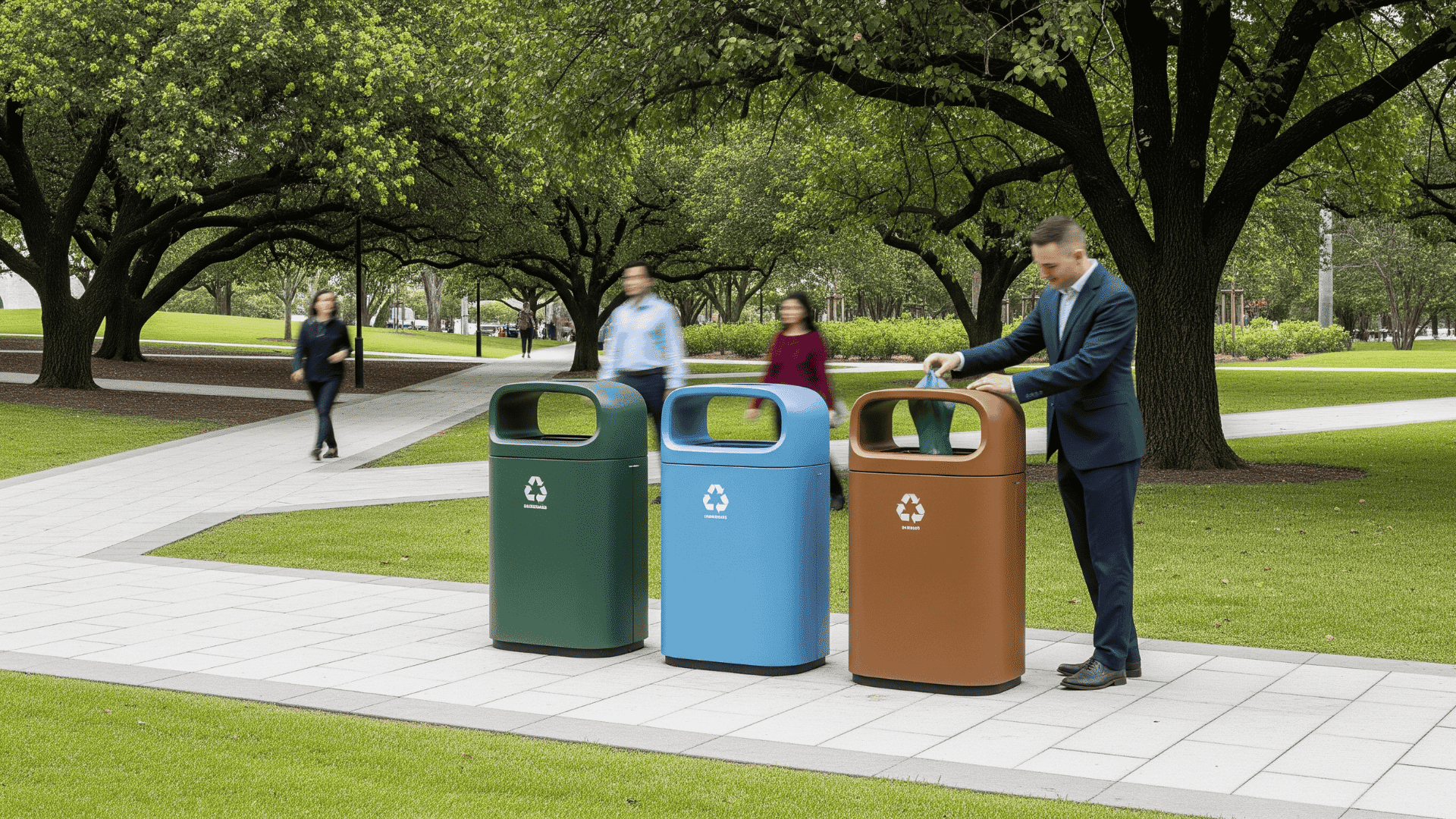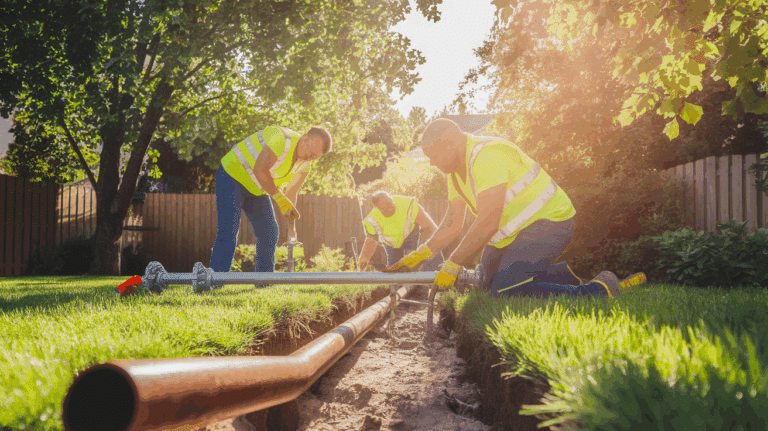Outside Garbage Containers: Key Types & Features Explained

Waste management poses a major environmental challenge for communities worldwide.
How we collect and store garbage directly impacts public health and natural spaces. Poorly managed waste creates problems from local pollution to broader ecosystem damage.
The right waste containers are crucial for waste management success.
Each type serves specific needs. Understanding key features helps communities improve sanitation while cutting costs and protecting nature.
This blog looks into outdoor waste containers, their key features, and what makes these systems work effectively to protect both communities and the environment.
Characteristics of Outdoor Garbage Containers
Outdoor waste receptacles serve as the first line of defense against pollution and health hazards. Their design and features must meet several essential requirements to function properly.
1. Durable and Weather-Resistant
Outdoor garbage containers must withstand various weather conditions. They face rain, snow, intense sunlight, and temperature fluctuations.
High-quality containers use materials like thick plastic, galvanized metal, or treated wood that resist corrosion, cracking, and warping.
The lifespan of a well-made container should extend for years, even with constant exposure to the elements.
2. Secure Against Animals and Pests
A fundamental requirement for outdoor waste containers is security against wildlife and pests. Containers must have tight-fitting lids that animals cannot easily remove.
In areas with bears or raccoons, specialized latching mechanisms prevent wildlife from accessing the contents.
This security protects both the animals, who can be harmed by consuming garbage, and communities, who avoid the mess of scattered trash.
3. Functional for Users and Collection Services
Outdoor containers must balance ease of use with practical functionality. For residential use, containers need handles and, ideally, wheels for movement to collection points.
The size must accommodate the waste produced between collection days without becoming too heavy to manage.
For collection services, standardized dimensions allow for mechanical lifting, reducing worker injuries and increasing efficiency.
4. Odor-Containing
Effective outdoor waste containers must minimize odors. This happens through tight seals, proper ventilation design, and materials that don’t absorb smells.
Some advanced containers include charcoal filters or other odor-neutralizing features. Controlling smells matters not just for comfort but also to reduce attraction to pests and wildlife.
5. Properly Sized for Needs
Outdoor garbage containers come in various sizes for different settings. Residential containers typically range from 32 to 96 gallons.
Commercial settings might require larger dumpsters measuring several cubic yards. Public spaces need containers sized for expected foot traffic and usage patterns.
The right size prevents overflow while making efficient use of space.
Types of Outdoor Garbage Containers

Different settings require specific types of outdoor waste containers to meet various needs.
Residential Containers
Standard curbside bins serve most homes, usually provided by municipal services. These containers typically feature wheels for mobility and standardized designs that work with automated collection trucks.
Many communities now distribute separate containers for general waste, recycling, and yard waste, each color-coded for easy identification.
Roll-out carts offer convenience for moving waste from storage areas to collection points. Their sturdy wheels handle various terrains, while the attached lids stay secure during transport.
In rural or wilderness areas, wildlife-resistant containers provide essential protection. These specialized bins use latching mechanisms that humans can operate but animals cannot, preventing access by bears, raccoons, and other creatures.
For yard waste and food scraps, compost bins allow on-site processing of organic materials. These containers facilitate natural breakdown while containing any associated odors.
Commercial and Public Space Containers
Dumpsters handle high-volume waste collection for businesses, apartment complexes, and institutions. These large steel containers come in various sizes, typically measured in cubic yards, and feature heavy-duty construction to withstand frequent use.
Solar-powered compactors represent a creation in public space waste management. These smart containers compress trash automatically, increasing capacity and reducing collection frequency.
Recycling stations provide separate receptacles for different materials, encouraging proper sorting. Clear labeling and consistent color coding help users dispose of items correctly.
Underground systems offer an alternative that hides most of the containers below ground level. These systems reduce visual impact, control odors more effectively, and often resist vandalism better than traditional above-ground options.
Environmental Impact of Outdoor Waste Containment
Good outdoor waste containers directly affect environmental quality in several important ways.
1. Landfill Reduction
When outdoor containers support proper sorting and disposal, less material goes to landfills. This matters because landfills produce methane, a potent greenhouse gas.
They also occupy valuable land that could serve other purposes, and many items in landfills take centuries to decompose.
2. Water and Soil Protection
Secure outdoor waste containers keep toxic chemicals from leaking into groundwater. Good containment stops rain from mixing with trash and forming harmful runoff.
Proper waste storage blocks microplastics and other pollutants from reaching soil and waterways. This protection maintains cleaner natural resources for communities.
3. Resource Conservation
The right outdoor containers make recycling and composting possible. This allows recovery of valuable materials like metals, glass, and certain plastics.
Organic matter becomes nutrient-rich soil instead of waste. Items that might otherwise end up as garbage can find new uses through proper sorting systems.
The Bottom Line
When communities invest in quality outdoor waste containers and maintain them properly, everyone benefits from cleaner surroundings and reduced environmental impact.
While often overlooked in daily life, these humble receptacles form a critical first line of defense against pollution and its associated problems.
As waste management challenges grow with increasing population and consumption, the role of proper outdoor containers becomes even more significant.
By understanding what makes these containers effective, communities can make better choices about waste management infrastructure that will serve them well for years to come.






